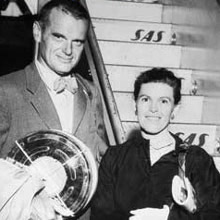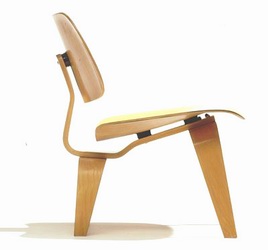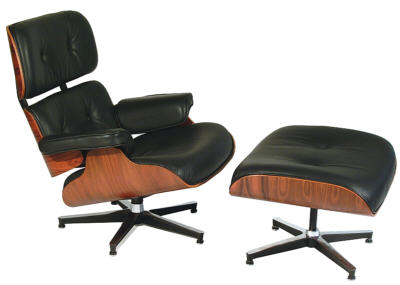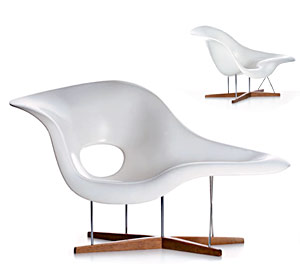
Charles Eames studied Architecture at George Washington University in St. Louis in Missouri from 1924 to 1926.
In 1936, after his limited success as an independent architect, he accepted the position of fellow at the Cranbrook Academy in Bloomfield Hills in the state of Michigan.
There he meets Ray Kaiser , a designer who became his wife and work partner for life.
In 1940, together with the architect and designer Eero Saarinen, he created a creation, which consists of a modern and innovative sadia made by modeling plywood, at a competition organized by MOMA (Museum of Modern Art).

Lounge chair wood
The product wins two awards and attracts the attention of furniture company Herman Miller.
The result is a partnership with the company with which Charles and Ray Eames created a wide range of furniture items designed to be mass-produced.

Lounge chair and Ottoman
Among the most successful creations that the two designers created for the Herman Miller company are: Eames Aluminum Group & Soft Pad Chairs, Eames Anniversary Table, Eames Chaise, Eames Desk Unit, Eames Elliptical Table, Eames Executive Chairs, Eames Hang-It-All, Eames, Lounge Chair and Ottoman , Eames Molded Plywood Chairs , Eames Molded Plywood, Coffee Table, Eames Molded Plywood Folding Screen, Eames Sofa, Eames Sofa, Compact, Eames Storage Units, Eames Tables, Eames Tandem Sling Seating, Eames, Walnut Stools, Eames Wire-Base Side Chairs, Eames Wire-Base Table, LaFonda Base Table.

Among the many awards and accolades that Charles and Ray Eames have obtained are:
-
Organic Furniture Competition, Museum of Modern Art, 1940
-
Emmy Award, (Graphics), "The Fabulous Fifties," 1960
-
Kaufmann International Design Award, 1961
-
25 Year American Institute of Architects Award, 1977
-
Eliot Norton Chair of Poetry, Harvard, 1971
-
Queen's Gold Medal for Architecture, 1979
-
Named "Most Influential Designer of the 20th Century," WORLDESIGN '85, Industrial - Designers Society of America, 1985
-
The Work of Charles and Ray Eames: A Legacy of Invention, Traveling Exhibition, Library of Congress, 1999.